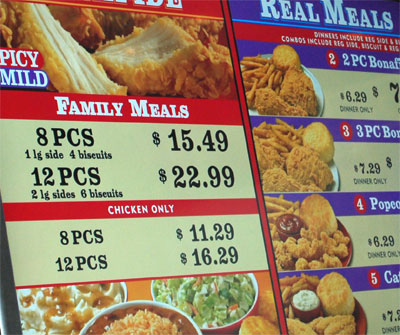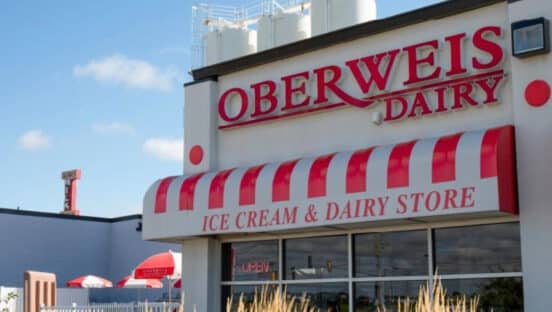Setting the right price points is no easy task. In today’s post-recessionary economy, product pricing is particularly tricky because consumers’ perception of value is confounding and seems to shift constantly. People will camp out overnight for the chance to buy a $499 iPad, but you can’t seem to spark any interest in a $4.99 burger combo.
You may not be able to predict how consumers will behave, but you can use pricing to your advantage. The solution lies in taking a strategic approach to pricing decisions. But even before we get into strategy, I need to challenge some conventional wisdom about setting prices.
Many chains use a cost-plus approach. That is, prices are based on food costs plus a labor charge and an overhead factor. The problem with cost-plus pricing is that it is a short-term, inside-out approach. Not only does it leave you vulnerable to variability in commodities pricing, but it also doesn’t reflect the full margin potential of your offerings. Customers may be willing to pay more for some items, but cost-plus pricing essentially treats all products the same. Pricing should be decided from the outside in.
Given Subway’s success with its $5 Footlong promotion, you may think you need to match or beat it, or find your own magic price point. But trying to find that magic number is like searching for the Holy Grail—it’s likely a fruitless and frustrating endeavor, because pricing isn’t about one number. Instead of trying to figure out the threshold that customers won’t give you permission to exceed, determine what your offering is worth and use your pricing strategy to set customers’ value perceptions accordingly.
There is no single price or pricing strategy that works for every chain. Audits and analyses of competitor’s pricing are crucial inputs to your price setting, but the point is not to simply copy other’s approaches. You should approach pricing as thoughtfully and strategically as your menu.
I say we give up those antiquated approaches and adopt some new ways of thinking about pricing. Price should be considered a touch point through which you express your brand and customers experience it. Pricing strategy should be aligned with your brand strategy. That is, you should use your brand image and positioning to drive price decisions—and in turn, use pricing to strengthen your competitive advantage and brand differentiation. Here are some ways to set your pricing strategy.
Reinforce your brand identity. Use price to communicate what your brand stands for. For example, if your brand is about 1950s-style fast food, then price your offerings with that style. You probably can’t charge ’50s prices, but you can price your offering for an even dollar amount instead of using today’s 99-cent convention—and offer classic combos for classic prices. If your brand is about offering healthy alternatives, ensure your healthier offerings are priced lower than the more mainstream ones—and definitely don’t charge more for substituting a healthy ingredient like soy milk or fat-free cheese.
Be clear about your competitive positioning. Don’t be afraid to charge more if you’re competing on quality, exclusivity, or a superior experience. Starbucks’ recent 9 percent same-store sales increase results prove that customers are willing to pay a price premium even in this economy. On the other hand, if you’re a low-price player, keep your prices low across the board—even one or two higher-priced products can detract from your position. Consider making a claim like “everything under $1.99 every day” and don’t offer combos that add higher price points to your menuboard.
Vary price to emphasize brand differentiation and value. Variable pricing draws attention to the value you offer or to the one dimension that most meaningfully differentiates you from competitors. If your burgers are your best product, pricing them higher than other menu items communicates their uniqueness. If special fries are your most popular menu item, sell all of your products with a side of fries and set your prices accordingly.
Vary price to target customer segments. You can also use variable pricing to appeal to certain customer segments. If you want to attract families, price your offerings to favor quantities and selections appropriate for family purchases. If dine-in customers are more desirable than take-out, consider a separate menu with special prices (and perhaps special products) for them. If you want to grow your breakfast daypart, accept a lower margin for those items.
Anchor your pricing. Price anchoring uses cues to set the customer’s expectations. Those TV infomercials that claim their new gizmo is “a $50 value that’s available today for only $19.99” use price anchoring to increase the perceived value of their offering. Wegman’s grocery stores show competitors’ prices on their shelves to prove their items are competitively priced. And car dealerships don’t display that $50,000 fully loaded model only to encourage customers to add on expensive options—they also use it to make customers feel like they’re getting a deal if they walk away with a $35,000 version. You can use similar approaches to communicate the perceived value of your menu items.
Pricing is too important to be made as an arbitrary decision. And just because consumers have cut back on spending doesn’t mean pricing is simply a game of “how low can you go.” With a strategic approach, you can use price as a helpful tool in your brand-building toolbox.













